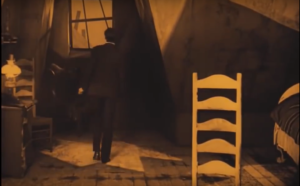Cinematography and editing are presented in Breathless, (1960) by Jean-Luc Godard, by using multiple techniques. This includes jump cuts and making scenes longer than standard. Godard creates this unconventional timing in the scene where the characters, Michal and Patricia, are driving in the car and several jump cuts are used.
These jump cuts are inconsistent and appears to be unconnected and random. This creates the Brechtian technique, used in theatre, which reminds the audience of the fact they’re watching a movie. This was also used in the scene where Patricia waits in the taxi while Michal gets out to speak to a man. The usual way of presenting this scene would be to have the camera follow Michal and allow the audience to hear the conversation however instead, Godard had the camera remain inside the taxi and have the conversation appear as a mix of ambient noises to show it from the perspective of Patricia because she, nor the audience, can hear what’s going on.
The “pointless” jump shots were unusual because although Michal was continuously talking, and Patricia hadn’t changed positioned, the jump shots still persisted. It is strange due to the purpose of jump shots being to cut to the next scene, although the scene still took place normally. By disconnecting the audience from the film, it allows them to understand it better and observe from better outlook. By being emotionally involved in a film, you allow your emotions to distract you from the real message behind the story. By feeling what the character’s feel, your reliable outsider’s perspective is gone. Another reason for these random jump cuts was because Godard was told to make the film a bit shorter.
Due to audience’s during “The Golden Age of Hollywood” becoming used to films ending with the protagonists having a happy ending, Breathless stood out even more because of Michal’s death, showing the opposite of what you would expect out of the film. Another way that Breathless was so different was that, due to a low budget, they replaced the idea of a constructed set with a real street in Paris in the final scene. These features, among others, were all reasons as to how French New Wave changed cinema.

